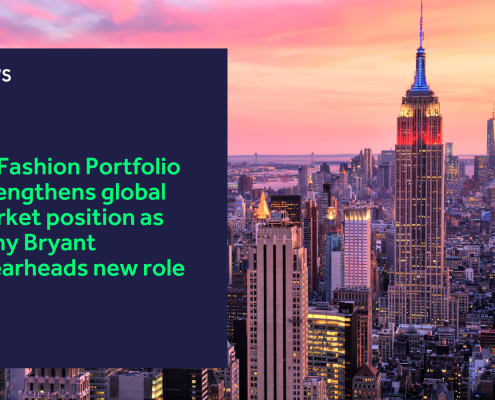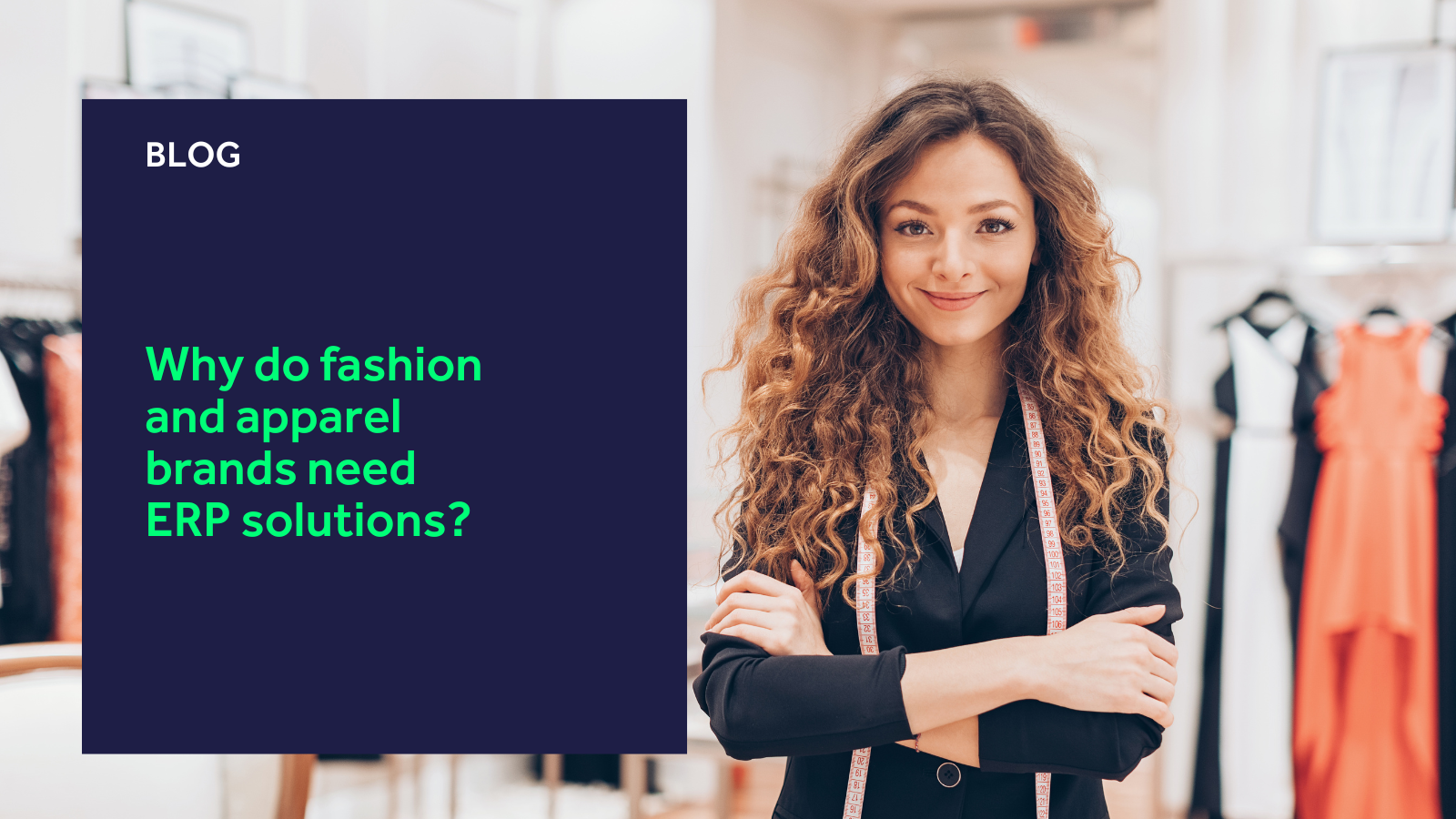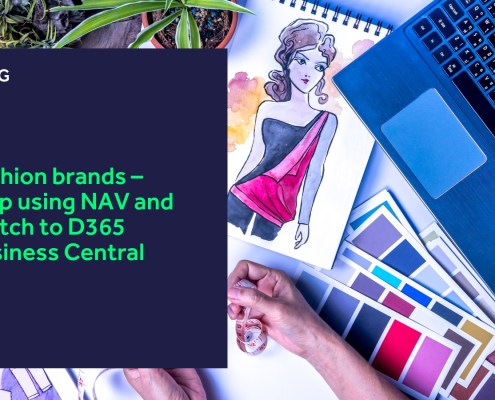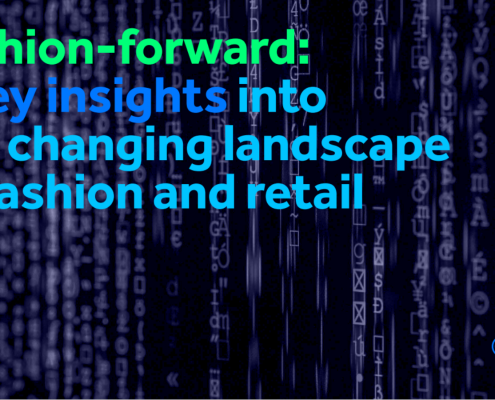While at the surface, fashion and apparel is a forward-thinking industry defined by new trends and styles, life is very different behind the scenes.
Consumers love the new – more seasons, styles, and reasons to shop until they drop.
Their needs and wants, however, create innumerable problems for brands that must constantly design new collections, purchase raw materials, manufacture the items, distribute them to stores, and ultimately sell the finished articles.
Shoppers scarcely think about the challenges associated with these stages, but from an operational standpoint, handling these individual elements is a nightmare without an efficient Enterprise Resource Planning (ERP) solution.
What is ERP?
In a nutshell, ERPs serve as the backbone of operations, providing a single, holistic view of operations to empower companies with real-time visibility.
It is not uncommon to hear that ERPs are the beating heart of a business. Their importance should not be understated for any industry, but much more so for fashion and apparel.
Brands must utilise essential data from various channels and sources, such as their finance, customer engagement, supply chain, and eCommerce teams, to inform their strategic decision-making.
It is paramount that this data flows into a central location for businesses to understand their organisation better.
Without real-time information, tasks like inventory management, stock distribution, and order fulfilment become more demanding.
Given that the modern consumer expects up-to-date inventories, accurate updates, and timely deliveries, brands must get the above correct. They are the basics.
ERP solutions fulfil those functions in abundance while providing myriad additional benefits to fashion and apparel businesses.
What are the benefits of ERP for fashion and apparel?
Today, brands have countless data sources scattered and siloed throughout their operations, leading to inefficiencies en masse.
This is largely because many companies in the industry still rely on old-school tools like Excel spreadsheets, while others haven’t yet adopted an effective solution built specifically for fashion.
ERPs modernise operations by unifying disparate data sources and ensuring all business processes flow through one location. They provide businesses with a single version of the truth from source to consumer.
Such data can subsequently be leveraged to adopt a customer-centric approach and help inform decisions pertaining to:
- Order management
- Season management
- Product lifecycle management
- Product data management
- Inventory and warehouse management
- Manufacturing
- CSR and supply chain traceability
- Price and cost management
- Retail and commerce
- Insights and intelligence
When paired with fashion-specific functionality, complex operations like colour, size, and fit handling can be dealt with easily.
Brands often produce multiple collections per year, each containing hundreds or even thousands of individual item variants, requiring a lot of data management.
By transitioning to a digital ERP system, businesses drastically lessen the burden of such a task by automating data entry, leading to more streamlined and efficient operations.
Additionally, ERPs play a pivotal role in supply chain management. With granular visibility into operations, companies make smarter decisions regarding their inventory to boost efficiency further and reduce the amount of inventory in the chain.
Suffice to say, ERPs set fashion and apparel brands up for success. Tidier operations result in lower operational costs, greater cost-effectiveness, and more revenue.
ERP trends in fashion and apparel
Several trends have emerged within the fashion and apparel ERP space that have led to companies considering alternatives to the likes of SAP and Oracle for enterprises, and Infor and NetSuite for SMBs.
This is because ERPs are traditionally generic in nature; they’re incredibly powerful solutions that underpin an organisation’s entire operations, but they often do not support fashion-specific processes.
In many cases, fashion and apparel brands attempt to strengthen their ERP platform by integrating various third-party solutions to create a complete solution.
This is clunky and inefficient.
The best brands today look for a total cloud-based fashion and apparel ERP solution that offers standardised processes aligned to the industry and delivers operational efficiency at scale.
These solutions, like K3’s, have a north star focus exclusively on fashion and apparel, meaning only functionality that truly solves industry challenges is built and implemented to offer deep IP depth and breadth.
Furthermore, the leading solutions eliminate the need to source external technical inputs, like APIs and plug-ins, to minimise tech stack complexity and bolster efficiency.
The Microsoft Dynamics 365 partner network
At K3, we hold a distinctive position as the only Global Independent Software Vendor (GISV) with fully embedded code within the Dynamics 365 technical landscape.
We purposefully chose to embed our solutions within Microsoft because we’re experts in fashion and apparel, not ERP. That’s Microsoft’s wheelhouse.
As a result, we combine to create a best-in-suite fashion ERP for brands to manage their entire operations from concept to consumer.
To help deliver our solutions, K3 has partnered with Dynamics 365 resellers all over the globe, ensuring we have coverage worldwide.
Our partners are well-versed in the D365 landscape and utilise K3’s solutions to deliver extra value to our joint customer base.
We offer two solutions for the fashion and apparel industry – K3 Fashion and K3 Pebblestone.
K3 Fashion traverses the entire fashion journey, from concept to consumer, meticulously embedded in D365 Finance, Supply Chain Management and Commerce. Designed for enterprises, K3 Fashion optimises inventory and distribution processes to drive profitability with real-time planning capabilities.
K3 Pebblestone, fully embedded in D365 Business Central, is designed for SMB brand owners, wholesalers, and CMT companies. It accelerates business processes by offering feature-rich functionality that includes planning, design, sourcing, purchasing, logistics, warehousing, and finance.
Put simply, K3 empowers you to:
Plan it. Buy it. Make it. Move it. Sell it.
If you’d like to learn more about K3’s solutions, feel free to drop us a line today.
 https://www.k3btg.com/wp-content/uploads/2024/03/K3-strengthens-global-market-position-blog-header.png
900
1600
Jordan Heal
https://www.k3btg.com/wp-content/uploads/2022/03/K3_Master_Colour_RGB.svg
Jordan Heal2024-03-11 10:58:242025-02-21 14:37:51K3 Fashion Portfolio strengthens global market position as Tony Bryant spearheads new role
https://www.k3btg.com/wp-content/uploads/2024/03/K3-strengthens-global-market-position-blog-header.png
900
1600
Jordan Heal
https://www.k3btg.com/wp-content/uploads/2022/03/K3_Master_Colour_RGB.svg
Jordan Heal2024-03-11 10:58:242025-02-21 14:37:51K3 Fashion Portfolio strengthens global market position as Tony Bryant spearheads new role

